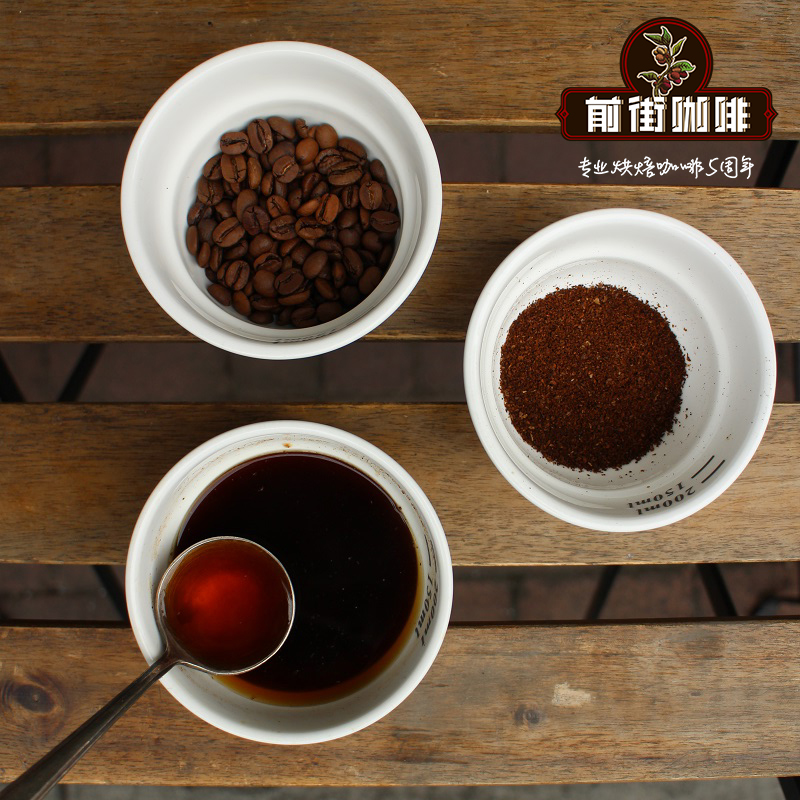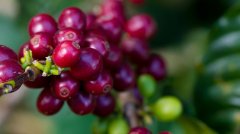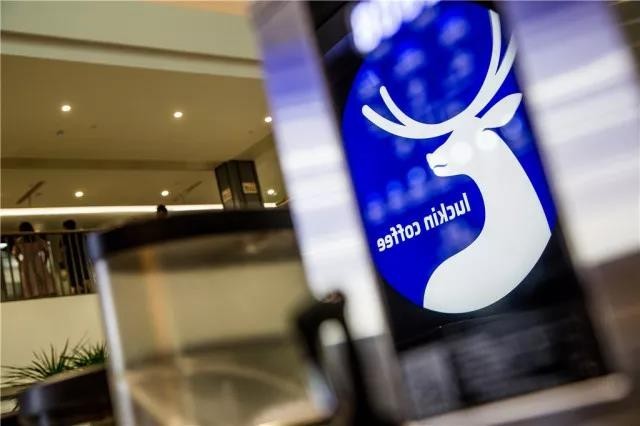Americans like to drink cold coffee. An interesting story about cold coffee bean knowledge

Professional coffee knowledge exchange more coffee bean information please follow the coffee workshop (Wechat official account cafe_style)
This year's summer officially begins on June 21, but that is only the day when the Summer Solstice, the sun reaches the highest point in the sky. On the streets, summer really begins on the first wet, sunny day, and even the idea of a cup of hot coffee can be unbearable. Just as birds instinctively know when to migrate, we wake up on a bright morning and feel that it is time to drink iced coffee.
The 24th branch of Gregorys Coffee in New York City is about to open, and its owner, Gregory Zamfotis, has been tracking temperatures since early May. "I read the weather forecast and sent an email to my branch manager," he said. Zamfortis estimates that for most of the year, 75% of the coffee he sells is hot and 25% cold. As the iced coffee season begins, these numbers will flip, and 65% of the coffee he sells will be iced.
This change may happen overnight. "you don't want to run out of iced coffee before 9 a.m.," he said. "
Iced coffee is indeed in danger of running out. All iced coffee at Gregory Cafe is cold and takes 12 hours to make, and the taste is often described as smooth, round and mellow. Zamfortis estimates that he can sell 10,000 cups of coffee a day during the summer rush.
There is no rush for cold coffee. If you are a coffee shop operator, you need to forecast demand. Every year this demand is growing: the United States is becoming a popular country for drinking cold coffee.
Gregory Zanftis, owner of the Gregory Cafe in New York City. His 24th branch is about to open. During the iced coffee season, 65% of the coffee he sells is iced coffee.
Gregory Zanftis, owner of the Gregory Cafe in New York City. His 24th branch is about to open. During the iced coffee season, 65% of the coffee he sells is iced coffee. BENJAMIN NORMAN FOR THE NEW YORK TIMES
In the past, coffee sales declined in the summer and rose sharply in the holiday season at the end of the year. But now, cold-extracted coffee has contributed to a surge in demand for coffee in warmer months, far more than other iced coffee drinks. Coffee sales increase as the temperature rises. Cold coffee has also attracted a whole new audience for coffee: millennials, many of whom make it their first choice.
"it creates a tendency to follow suit," said James James Freeman, founder of Blue Bottle Coffee. "this feedback loop will lead to more orders for iced coffee, and it will arouse desire to see other people order iced coffee." This is the coffee version of "I eat what she eats".
A peculiar regional drink once limited to New Orleans and the South is now found all over the United States. This shift began about a decade ago. At the time, creative cafes such as Blue bottle Coffee (which sells a chicory-flavored cold extract coffee called New Orleans iced coffee) and Stumpton roasted coffee (Stumptown Coffee Roasters, which sells nitrogen cold extract coffee, which contains nitrogen, so it bubbles slightly, like the thick creamy foam of a good stout) began to use cold extraction to make coffee.
Until 2015, when Starbucks announced the introduction of cold coffee in some stores, it remained a relatively niche market. Cold extract coffee is now available in more than 13000 Starbucks stores in the United States, including nitrogen cold extract coffee. It has become a kind of coffee that is both attractive to the mass market and has a non-mainstream reputation. Now, whether in everything insists on carefully handmade cafes, or in Dunkin'Donuts, you can find the shadow of cold coffee.
Camilla Ramos, the owner of the full-time coffee shop, is pouring nitrogen cold extract coffee. JOHN VAN BEEKUM FOR THE NEW YORK TIMES
What is cold coffee? In essence, it is a kind of preparation. Soak the coffee powder in water at room temperature (strictly speaking, not cold water) for 6 to 20 hours (depending on the method) to make espresso that can be diluted with water and served on ice cubes. Since there is no heating process, the production time must be increased.
Cold coffee is more than just hot coffee that slows down. It is a very different product. Hot water releases acid from coffee, a feature that professional tasters call "brightness". Cold water will not be like this, but it will still bring rich taste and aroma. Compared with iced coffee in the dark ages, which is almost always made by cooling hot coffee in the refrigerator, it is even more obvious that cold coffee has no sour taste. When hot coffee cools, it produces more acid, many of which are strong and unpleasant.
But in some coffee circles, cold extract coffee has a poor reputation. According to people in these circles, the selling point of cold coffee, which has no sour taste, is a defect. The world's best coffee, which grows at high altitudes, sells more because of its complex sour taste: brightness is an advantage. Why give up a decisive feature of good coffee?
In addition, critics say prolonged exposure to the air during soaking can lead to the oxidation of cold-extracted coffee and make it tasteless. Some cafes use cold coffee as a garbage dump for poor coffee-aged beans that are lighter or beans that are light and can't stand the traditional process.
Joe Sasson and Jenny Bonchak founded a small-batch coffee company, Slinchett. EAMON QUEENEY FOR THE NEW YORK TIMES
"the main reason is that there is no sour taste, which is very insipid," said Slingshot Coffee Co., a coffee company co-founded with her husband, Jonathan. Said Jenny Bonchak (Jenny Bonchak) of. "but that's not the coffee we want. What we want is something that tastes balanced and powerful. "
Bonchak uses premium coffee beans from Counter Culture Coffee, a roasting company in Durham, North Carolina. Slinchot coffee has been praised by some coffee fans who are often reluctant to touch cold coffee even with a 10-foot-long straw.
Important Notice :
前街咖啡 FrontStreet Coffee has moved to new addredd:
FrontStreet Coffee Address: 315,Donghua East Road,GuangZhou
Tel:020 38364473
- Prev

2019 Coffee Market Forecast: the price of coffee beans has fallen sharply, and the output may be reduced.
Professional coffee knowledge exchange more coffee bean information Please follow coffee workshop (Wechat official account cafe_style) Coffee bean prices plummeted in 2018, making it cheaper for companies selling coffee-related products, but bitter for farmers, but this situation may reverse in 2019, because the price drop has caused coffee farmers to plant less. Coffee bean farmers are having a hard time because of Arabica
- Next

Lucky Coffee flag:2019 will surpass Starbucks completely and will never become the next ofo
Professional coffee knowledge exchange more coffee bean information please follow the coffee workshop (Wechat official account cafe_style) in the afternoon of January 3, Luckin Coffee held a strategic communication meeting in 2019 to release 2018 annual operating data, 2019 development goals and respond to recent questions. Luckin Coffee began trial operation on January 1, 2018 and officially went into operation on May 8. Luckin Coffee spent one year
Related
- What brand of black coffee is the most authentic and delicious? what are the characteristics of the flavor of the authentic Rose Summer Black Coffee?
- Introduction to the principle and characteristics of the correct use of mocha pot A detailed course of mocha pot brewing coffee is described in five steps.
- Which is better, decaf or regular coffee? how is decaf made?
- How much is a bag of four cat coffee?
- How about four Cat Coffee or Nestle Coffee? why is it a cheap scam?
- Which is better, Yunnan four Cats Coffee or Nestle Coffee? How about cat coffee? is it a fake scam? why is it so cheap?
- How about Cat Coffee? what grade is a hoax? which instant coffee tastes better, four Cat Coffee, Nestle Coffee or G7 coffee?
- Process flow chart of coffee making-Starbucks coffee making process what coffee tastes good at Starbucks
- The top ten best coffee beans in the world Rose summer coffee or Tanzanian coffee tastes good
- Yunnan four cat coffee is good to drink?_four cat coffee is a big brand? four cat blue mountain coffee is fake?

